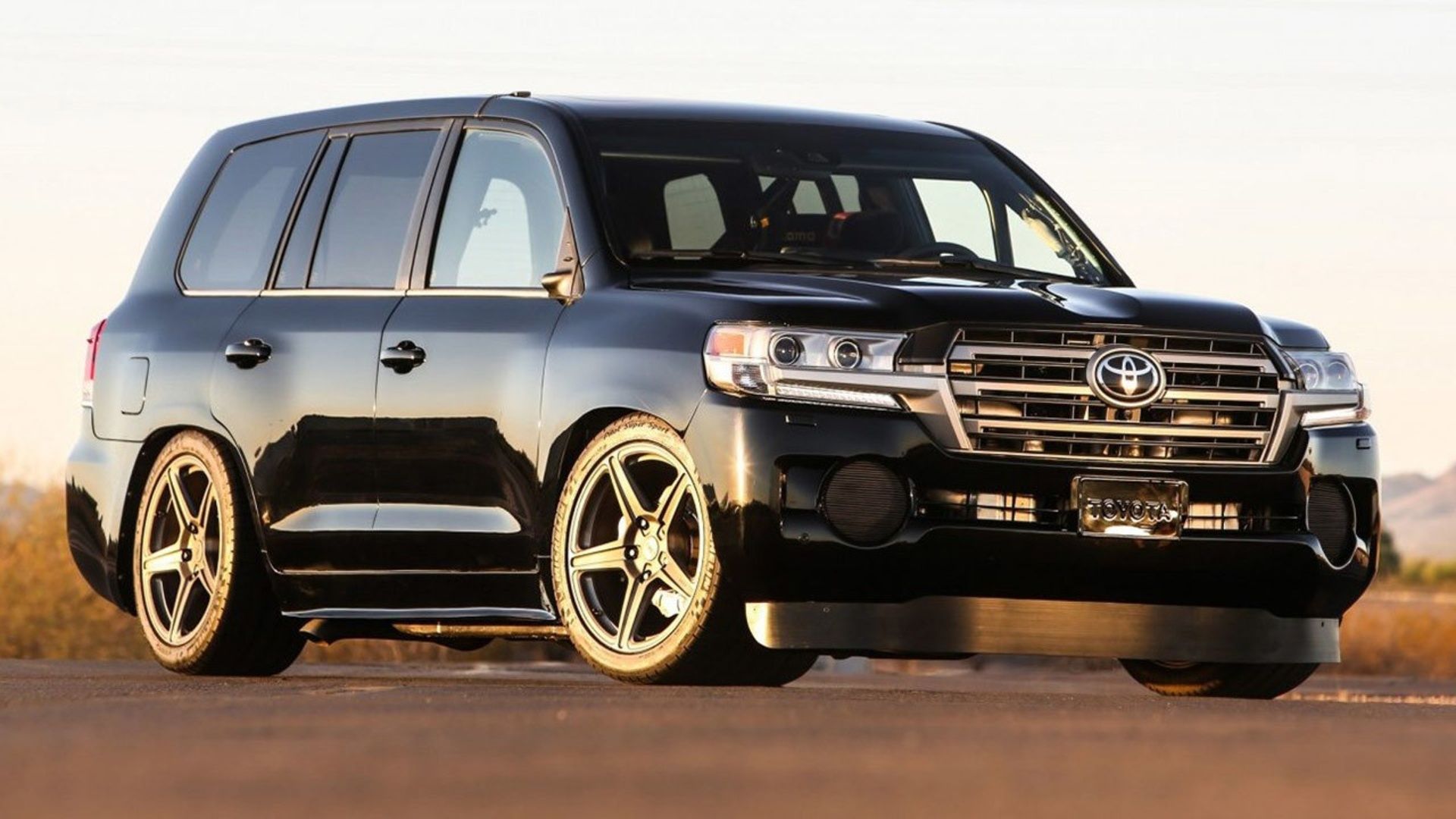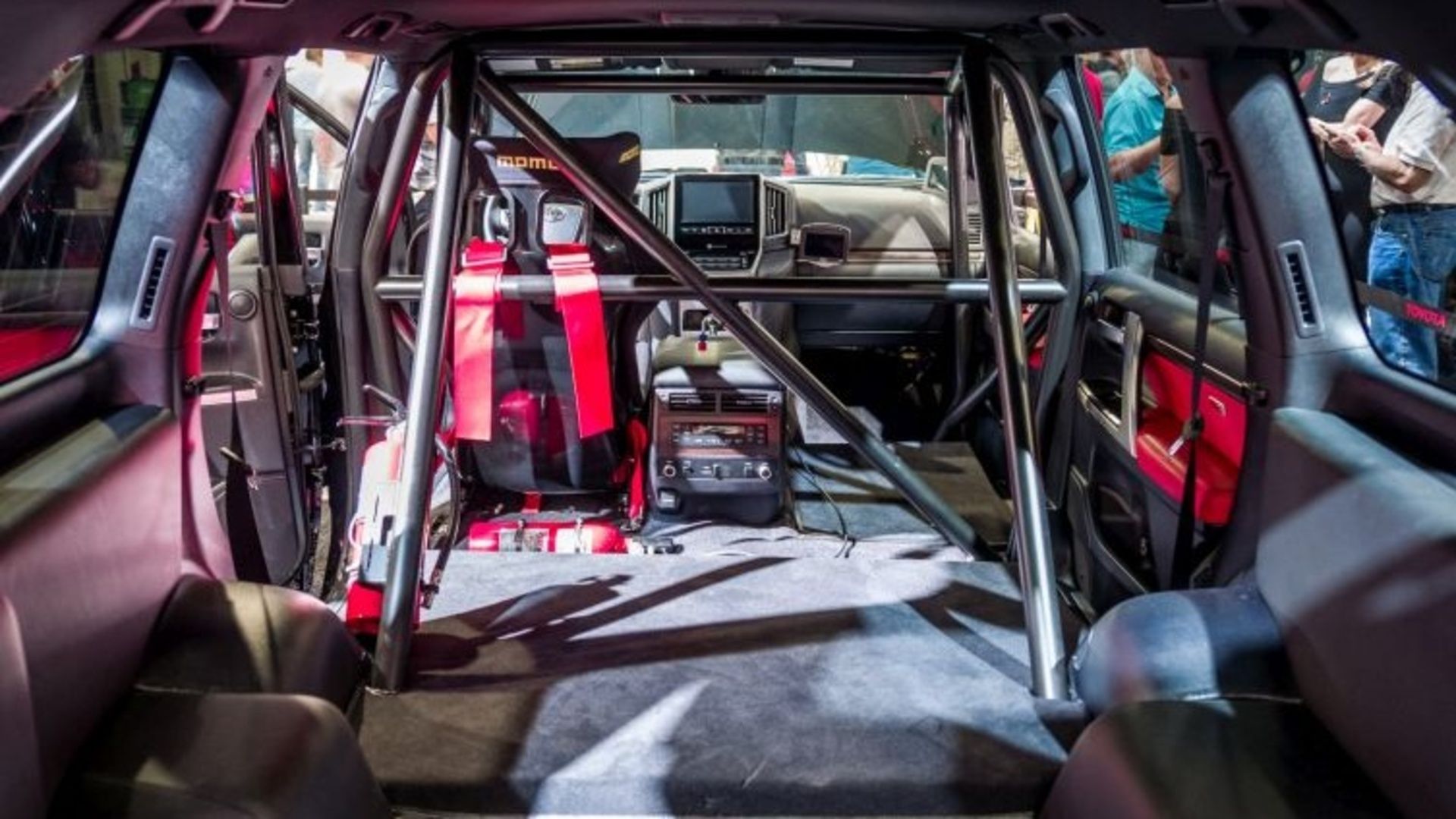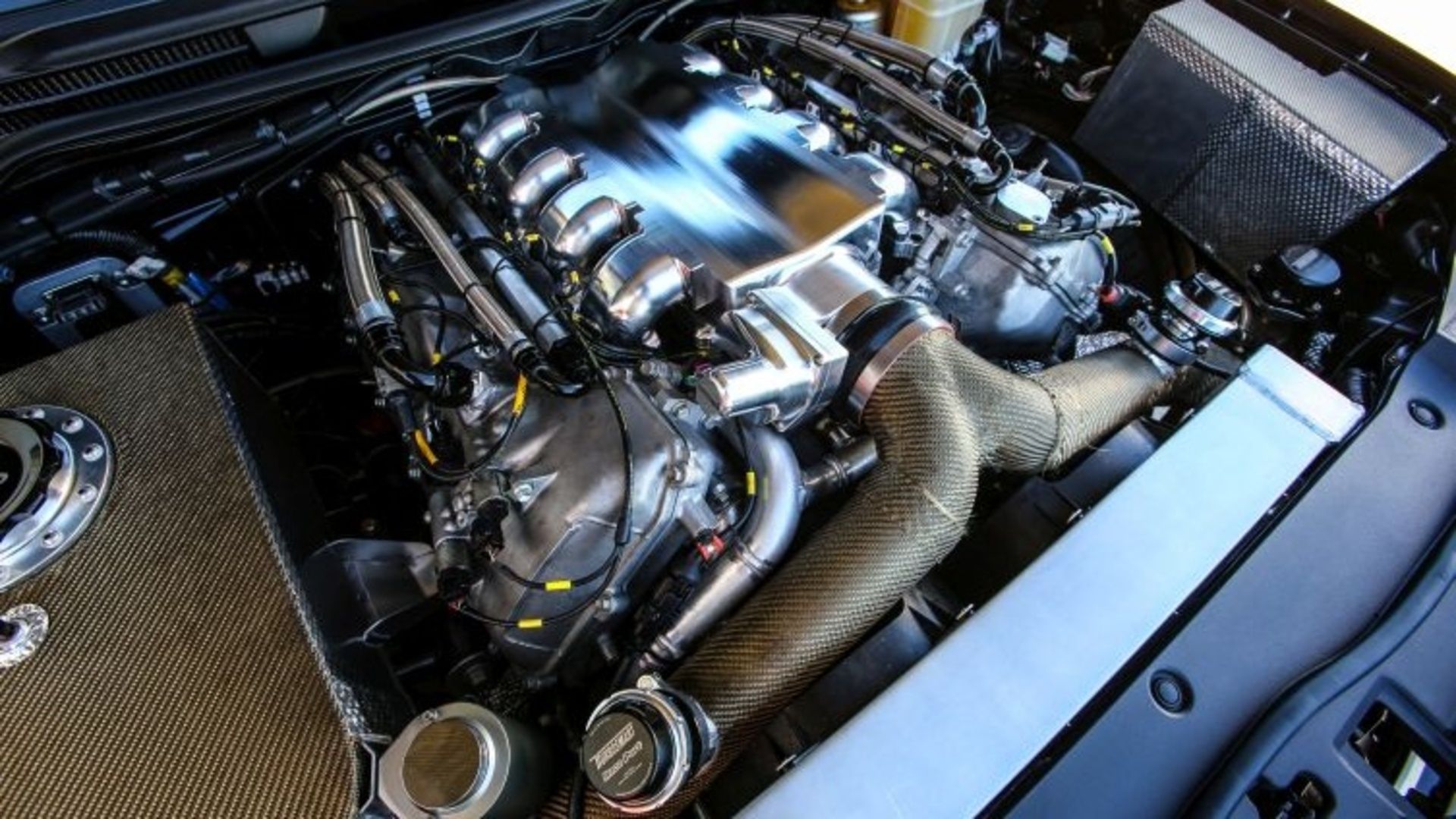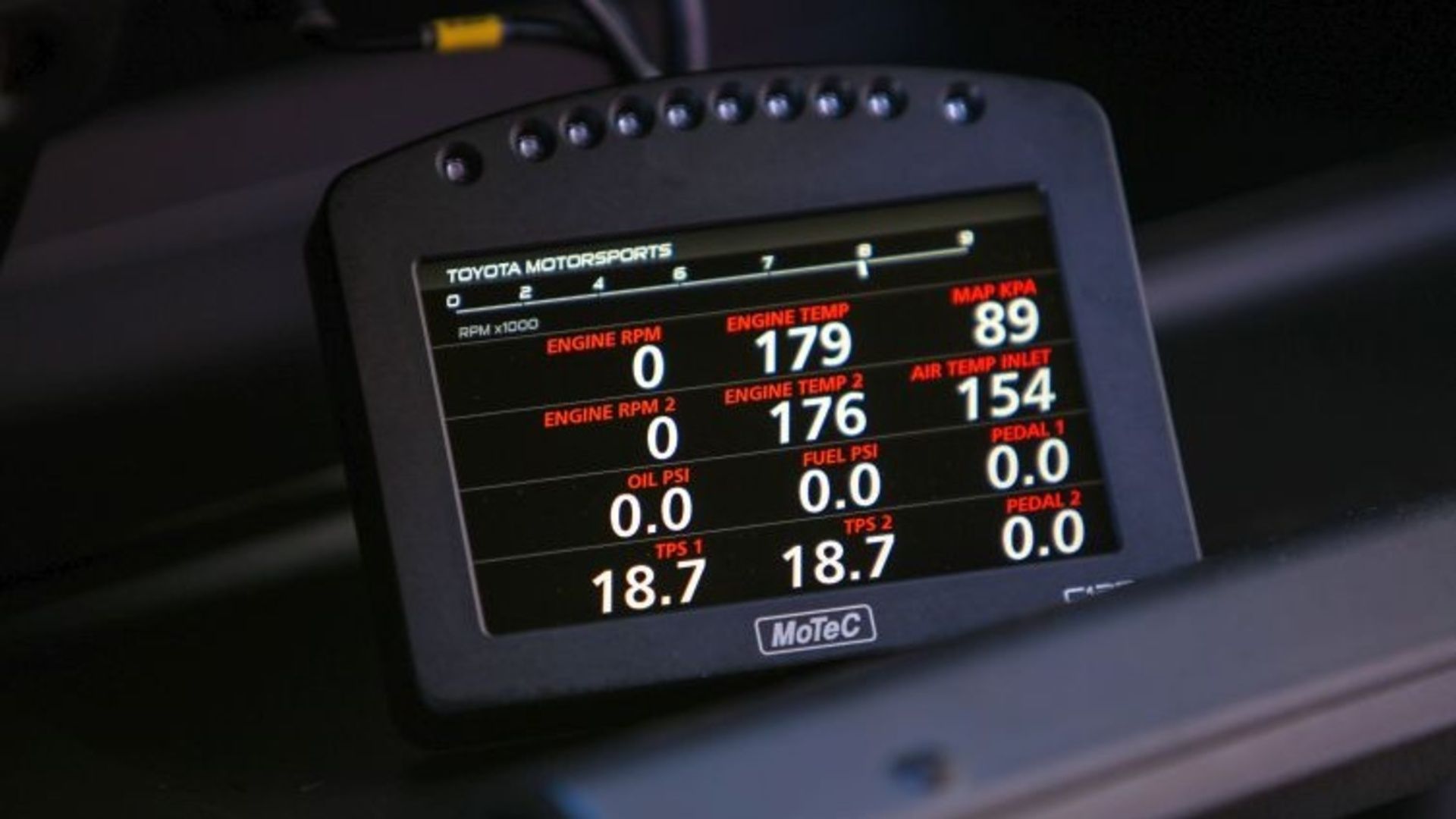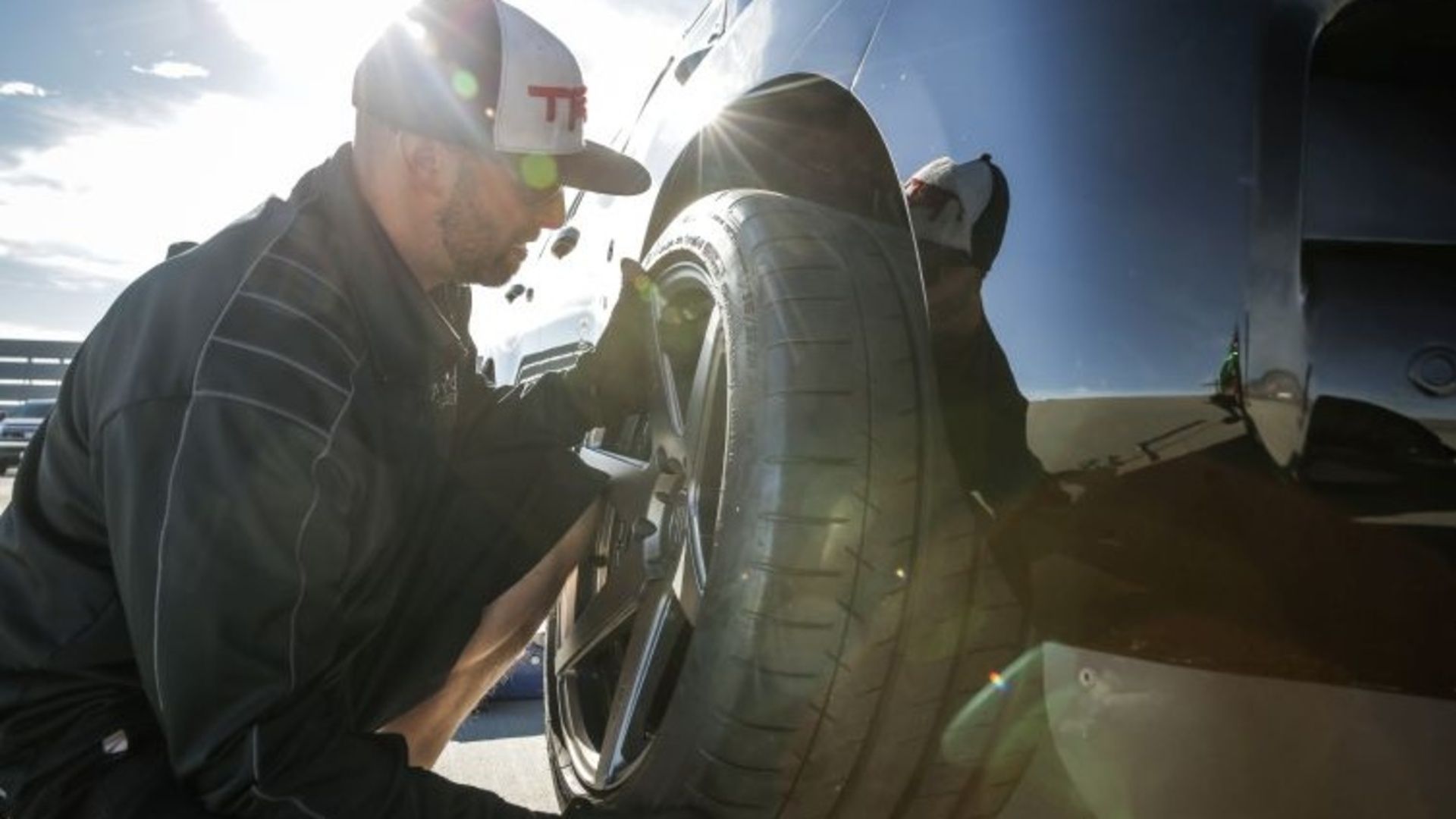Summary
- Toyota’s Land Speed Cruiser, a modified version of the Land Cruiser, reached a record-breaking speed of 230.2 mph.
- The creation of this high-speed SUV required extensive modifications, including to the vehicle’s aerodynamics, suspension, engine, and tires.
- The Toyota Motorsport Technical Center, known for NASCAR cars, transformed the Land Cruiser into a super high-speed vehicle.
To assert that the Toyota Land Cruiser is one of the most successful vehicles from the Japanese manufacturer is stating the obvious. Over 10 million units have been built since 1951, a record in itself. However, the Japanese SUV can also boast of other accolades.
Toyota has carved out a place in the book of records thanks to its 2,000 horsepower Land Speed Cruiser. Unveiled at the 2016 SEMA Show, the Toyota Land Speed Cruiser bears little resemblance to the Land Cruiser you might find at your local Toyota dealership. This marked a pivotal moment, capturing the attention of enthusiasts and bystanders alike, and surprising them by breaking the record for maximum speed for an SUV, something unthinkable for the Japanese model until 2016.
This SUV, which started its life as a humble Toyota Land Cruiser, managed to reach a speed of 230.2 mph, approximately 87 mph faster than the official maximum speed of the fastest production Land Cruiser.
This presented a significant challenge for the Toyota Motorsport Technical Center (MTC), located in Los Angeles, which set out to achieve this feat. They had to work meticulously on the car’s aerodynamics and make the necessary modifications to turn it into something capable of reaching the goal.
Until that moment, this department had been primarily responsible for the development of the race cars that Toyota competed with in NASCAR. However, when presented with the opportunity to undertake the Land Speed Cruiser project, they didn’t hesitate to accept the challenge.
In order to give you the most up-to-date and accurate information possible, the data used to compile this article was sourced from various manufacturer websites and other authoritative sources, including Toyota.

TOSCO to Gazoo – A Brief History of Toyota’s Racing Division
From the very first Round Australia Rally in 1957 to the very latest 2022 GR Corolla, here’s a brief look into Toyota’s rich and inspiring racing history
It All Starts With The Heavily Modified 5.7-Liter 3UR-FE V-8 Engine
For the engineers at the Toyota Motorsport Technical Center, this endeavor was not just about breaking a record; it was a test of their skill and dedication to pushing the boundaries of automotive performance.
Every aspect of the stock Land Cruiser, a benchmark for off-roading SUVs, had to be carefully considered and optimized to ensure it could withstand the extreme speeds required to set a new benchmark. From redesigning the bodywork to fine-tuning the engine and suspension, every detail was scrutinized and refined to maximize performance and stability.
Nearly All Components Beneath The Bodywork Were Modified
As you might have guessed, virtually everything beneath the bodywork underwent modification. The original interior disappeared entirely, including all seven seats. The driver’s seat was replaced with a competition bucket seat, complete with FIA-spec safety harnesses. Naturally, a certified all-encompassing roll cage was added for safety, but the most significant modification occurred under the hood with the engine.
A Standard 5.7-Liter Gasoline V-8 Underwent Significant Modifications
Those modifications mean nothing without an engine capable of achieving supercar speeds. The foundation was a standard 5.7-liter gasoline V-8, which produces 376 horsepower and 400 pound feet. In fact, this was the most powerful engine that Toyota offered at that time, associated with the Land Cruiser in the North American market.
Nevertheless, the engineers transformed it to competition-worthy levels: new pistons, forged connecting rods, and other internal components, along with two enormous turbos Garrett GTX4718R the size of a soccer ball, each blowing at an astonishing 3.8 bars of pressure!
Typically shielded by filter elements during high-speed operations, the turbines of each unit are now visibly exposed, resembling the unbridled force of jet engines on an aircraft, eagerly primed to draw in the surrounding atmosphere.
To put it into perspective, the turbo in the 2.0-liter Mercedes-AMG CLA 45 — one of the most powerful stock turbos — blows at 1.8 bars (which incidentally is also the boost pressure of the Bugatti Chiron’s turbos). Due to the amount of pipework running to and from these turbos, it was necessary to relocate the battery from the engine bay to the right-hand corner of the luggage area.
Necessary Measures Were Taken To Avoid Fuel Cavitation During Acceleration
To mitigate the risk of fuel cavitation during acceleration, a remote reservoir was integrated into the fuel system. Initially, the liquid is drawn by two pumps located within the original tank, which then transfer it to an independent alloy catch tank positioned in the trunk, adjacent to the battery. The upright design of the tank ensures that voids are prevented from forming in the liquid around the pump intake, thereby ensuring a steady supply of fuel to the injectors.
This system operates under the supervision of a MoTeC electronic control unit, which also utilizes a display unit to provide essential additional information on the engine’s condition. Following combustion, the exhaust gases undergo further processing facilitated by a high-lift camshaft and ported cylinder heads.
These modified components guide the gases along a dynamic pathway through a custom Borla exhaust system, exiting from the side of the vehicle, just ahead of the rear wheels. This redirection of the exhaust gases allowed to flatten the underfloor area and fabricate a rear diffuser.
Additional Tweaks Everywhere
Every aspect of the original model underwent meticulous adjustments or outright replacements. From the chassis to the engine components, no part remained untouched.
- The TurboSmart specialist was responsible for the blow-off valve, while the intercoolers were customized by Toyota Motorsport’s own department.
- The engine displacement was reduced to 5,663 CC.
- The transmission chosen to handle this power surge was an eight-speed Weismann automatic gearbox, featuring a wet, centrifugal, and multi-disc clutch.
- Three fuel pumps were responsible for fuel delivery.
- The exhaust system was divided into two massive pipes, positioned on either side of the body.
A Power Output of Nearly 2,000 Horsepower Was Attained
The culmination of these meticulous modifications and engineering enhancements results in an awe-inspiring output: a staggering 1,972 horsepower! This immense power output propels the Toyota Land Speed Cruiser into the realm of hypercars, becoming a force to be reckoned with, capable of achieving speeds previously reserved for only the most elite and exotic vehicles on the planet.
2:44

Fastest SUVs In The World
While they may be big and heavy, they are supercar fast and these are the 20 fastest SUVs on the planet
The Aerodynamic Modifications Done To Exceed 200 MPH
Enhancing power is only part of the equation. Without achieving stability, the driver’s ability to fully utilize that power is compromised, the vehicle’s performance potential is limited and, therefore, its longevity on the track is jeopardized.
Ensuring stability is paramount. This requires a holistic approach that addresses various factors, including suspension tuning, aerodynamics, tire grip, and chassis rigidity. Each of these elements must work in harmony to provide the driver with confidence-inspiring stability, especially when pushing the vehicle to its limits.
Gaining Stability Meant Comprehensively Redesigning The Suspension System
In the case of the Land Speed Cruiser, achieving stability involved a comprehensive redesign of its suspension system, which has been meticulously fine-tuned, courtesy of Fox Shox shock absorbers and Eibach springs.
This carefully calibrated setup not only enhances the vehicle’s stability and handling at high speeds but also contributes to its aggressive stance and aerodynamic efficiency by minimizing drag and downforce. Complementing this dynamic suspension setup are the striking 20″ Momo wheels, which not only add a touch of style but also provide a solid foundation for the vehicle’s performance capabilities.
Opting For The Appropriate Tires Was Critical
Furthermore, selecting the right tires is paramount for optimizing traction and grip, thereby enhancing stability during both acceleration and braking maneuvers. In pursuit of this goal, the Toyota Land Speed Cruiser Concept was equipped with top-of-the-line Michelin Pilot Super Sport tires, renowned for their exceptional grip and performance characteristics.

Toyota Land Cruiser GR Vs. Nissan Patrol Nismo
Two highly exclusive full-size Japanese SUVs, that have been given the high-performance treatment, and here’s how they stack up
The Goal Was To Revert What Traditionally Was: An Off-Road Vehicle
The vehicle made its debut was at the SEMA Show in Las Vegas, in November 2016. It quickly became one of the standout attractions of the event, and its appearance hinted that this Land Cruiser was no ordinary modification. The absence of traditional side mirrors, replaced by cameras, the massive 20-inch alloy wheels fitted with 315/35 ZR20 tires, and the glossy black paint of the body hinted that this was no ordinary vehicle.
Land Speed Cruiser specifications
|
Engine |
Rebuilt 3UR-FE 5.7-litre V-8 |
|---|---|
|
Horsepower |
1972 HP |
|
Transmission |
Weismann eight-speed automatic transmission with multi-disc centrifugal wet clutch and electronically-controlled air shifts |
|
Top speed |
230 mph |
|
Chassis |
20” Momo/TRD alloy wheels with 315/35 R20 Michelin Pilot Super Sport tyres, Fox Shox shock absorbers with Eibach lowering springs |
|
Interior |
Stripped of original seating, custom multi-point roll-cage, Momo bucket seat, Simpson harness, ignition cut-off, plumbed-in fire extinguisher system |
(Data sourced from Toyota)
Its Aerodynamics Have Been Significantly Enhanced Thanks To Key Modifications
In addition to the lowered suspension and low-profile tires, the Land Speed Cruiser Concept undergoes further alterations to distinguish itself as a high-performance vehicle. While the Land Cruiser’s overall shape poses challenges for aerodynamics, two key modifications have notably improved its aerodynamics.
The first one, lowering the ride height through custom shocks and springs has reduced high-speed lift, as previously explained. In addition to this, we have the exchange of the elephant-ear door mirrors for sleek rear-facing video cameras, which reduces the car’s frontal area. This is a design choice increasingly common in concept vehicles that further streamlines the vehicle’s profile for improved aerodynamic efficiency.
Combined with other performance-oriented modifications, such as lightweight materials and racing-inspired instrumentation, the Land Speed Cruiser Concept represents a bold departure from the traditional SUV formula.
This Process Proved To Be A Challenge For The Team: Just What They Wanted
Transforming Toyota’s venerable, heavy-duty SUV into a record-chasing missile was no easy task, a fact that is disguised by its understated exterior appearance.
“
This is what makes it so special
,” revealed centre manager Chuck Wade, who built the Land Speed Cruiser with his team of engineers. “Every single system and component has been touched. The trick was getting the body back on to the heavily modified frame.”
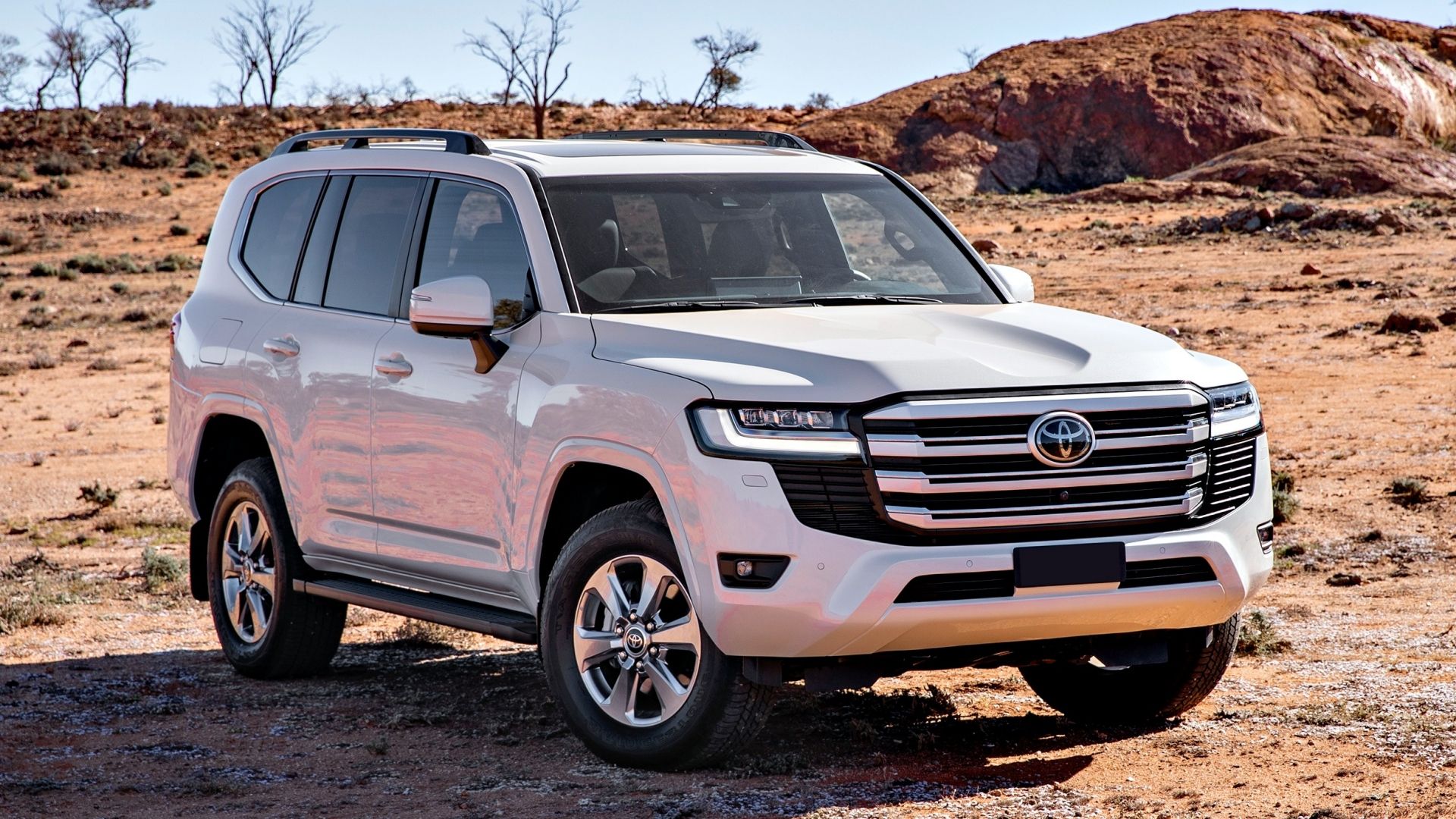
Here’s What Makes The Toyota Land Cruiser Impossible To Beat
Be it off-road use, on the battlefield, and everywhere in between, the Toyota Land Cruiser has become a jack of all trades
230 MPH Proved Sufficient To Set A New World Speed Record For Off-Road Vehicles and SUV
Transforming a large, heavy, and unwieldy vehicle into a beast capable of outpacing many supercars in a straight line is a challenge that few would dare to undertake. However, for Chuck Wade’s team, the creators of this monstrous machine, it was a thrilling endeavor.
NASCAR Driver Carl Edwards Took On The Role Of Piloting The Car
After race driver Craig Stanton fine-tuned the Toyota Land Speed Cruiser at the Arizona Proving Ground (TAPG), owned by Toyota, former NASCAR driver Carl Edwards was tasked with piloting the Toyota Land Speed Cruiser on the 2.5-mile-long track at the Mojave Air and Space Port.
Edwards made the initial record attempt on May 2, 2017. He reached a maximum speed of 211 mph, although he had to lift off the throttle prematurely due to miscalculating the required braking distance. As a result, a second attempt was carried out.
According to him, “at 225 mph, the car was moving from side to side, but I just kept thinking about what Craig Stanton told me: ‘whatever happens, keep the pedal to the metal,’ and we’ll reach 230 mph.”
As the saying goes, “said and done”, the goal was ultimately achieved. Thanks to the implemented modifications, the Land Speed Cruiser reached 230 mph. This smashed the previous SUV record by more than 19 mph!
The Mojave Desert of California Hosted The Record-Setting
The speed record wasn’t set on one of North America’s vast salt flats, but rather on a compact 2.5-mile asphalt track nestled in the Mojave Desert of California, U.S.A.; one of the longest in the U.S. This choice of venue might seem unconventional compared to the expansive salt flats typically associated with high-speed runs, yet it proved to be the perfect setting for Toyota’s Land Speed Cruiser to unleash its full potential.
A Testament To Toyota’s Engineering Team And The Land Speed Cruiser
This feat was a testament not only to the power of the Land Speed Cruiser but also to the ingenuity and expertise of Toyota’s engineering team. It showcased their ability to take a humble SUV and transform it into a record-breaking powerhouse, further solidifying Toyota’s reputation as a pioneer in automotive technology and performance.
By pushing the boundaries of automotive engineering and performance, Toyota has once again demonstrated its commitment to excellence and its ability to set new standards in the industry. The Land Speed Cruiser’s record-breaking achievement is not only a source of pride for Toyota but also a testament to the endless possibilities that lie ahead in the world of automotive innovation.


